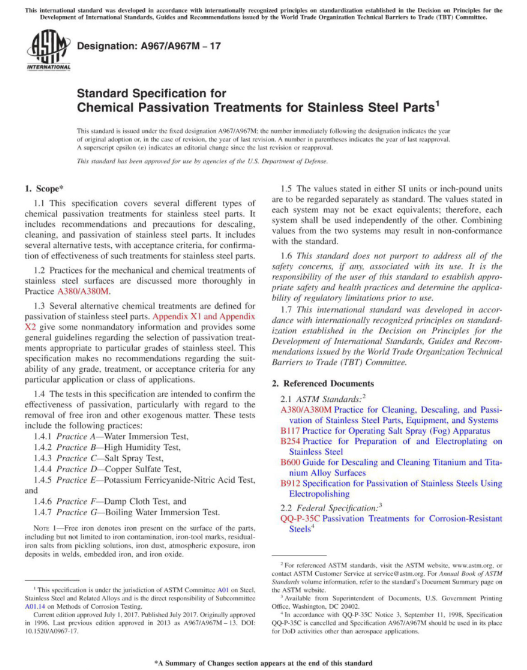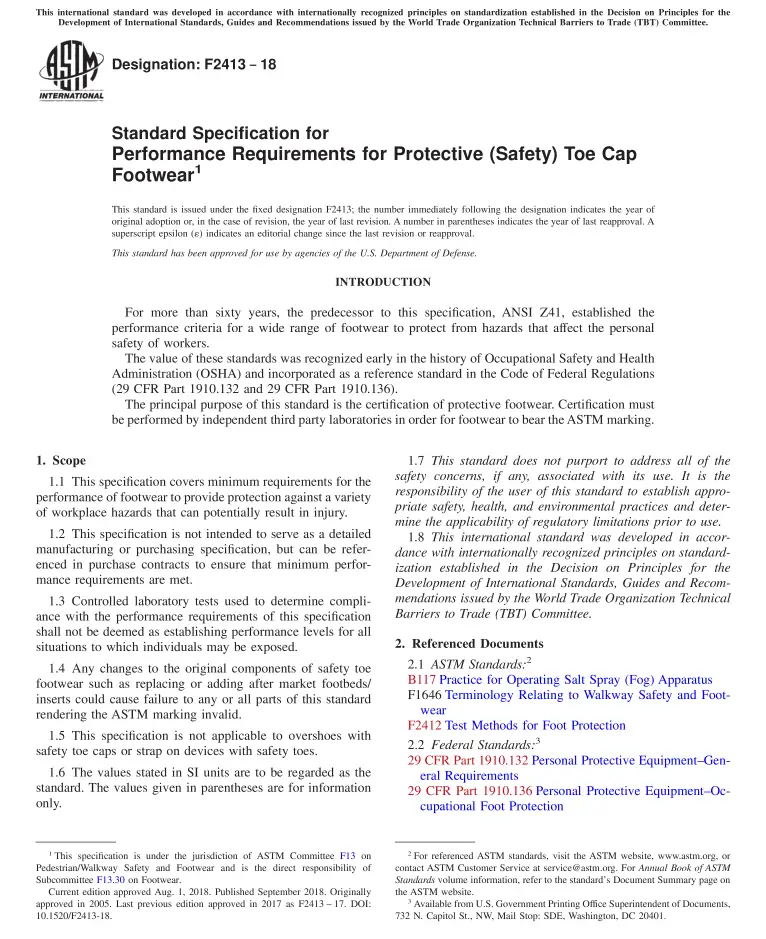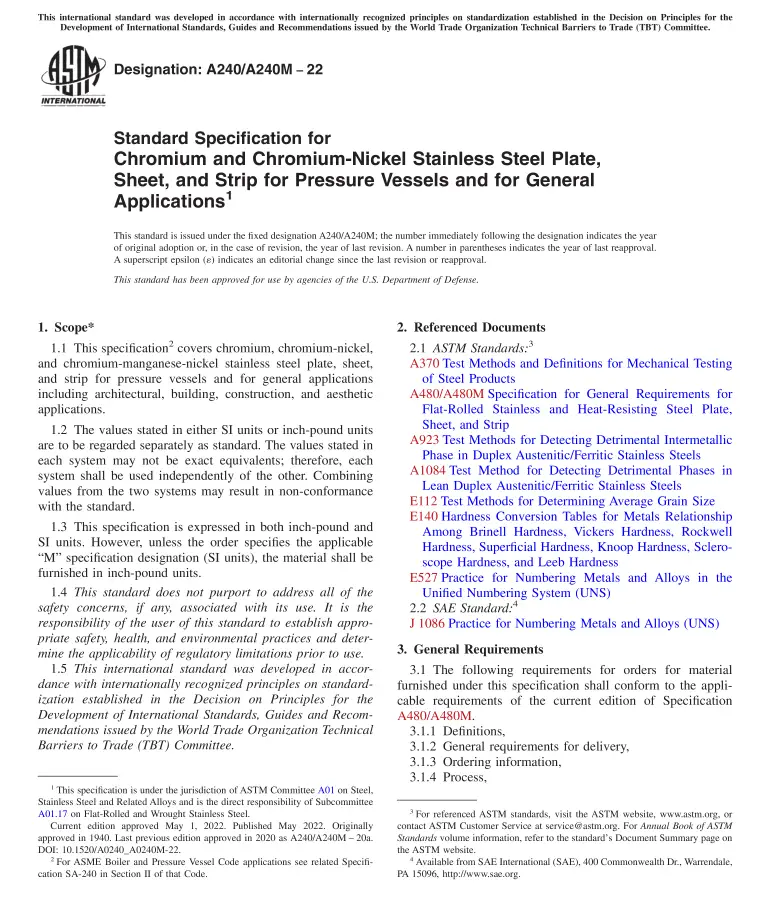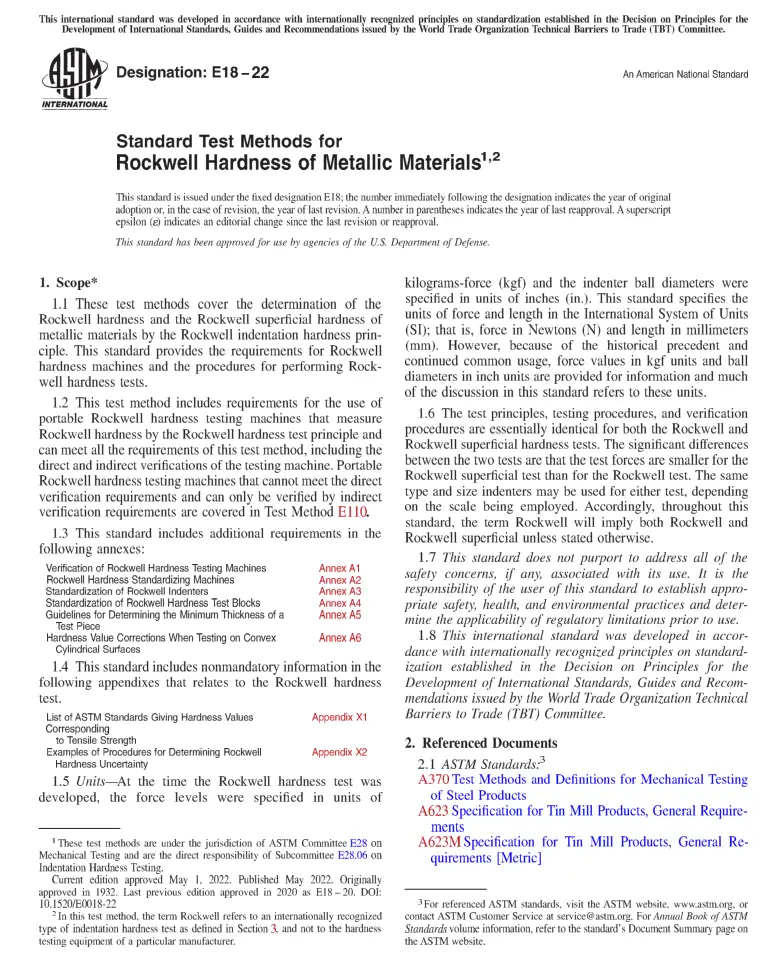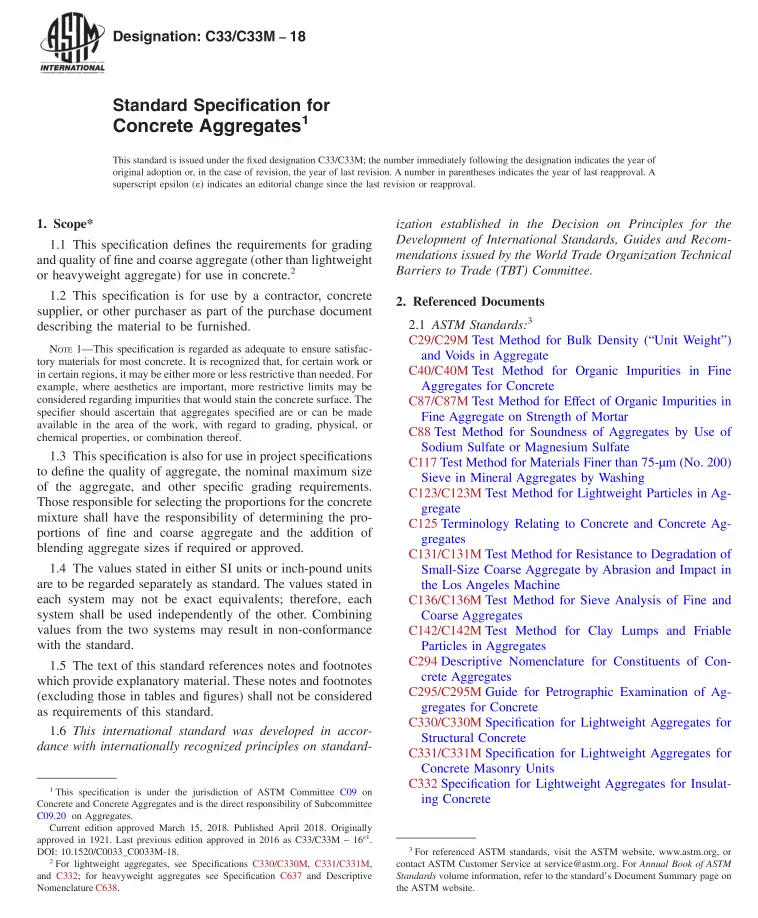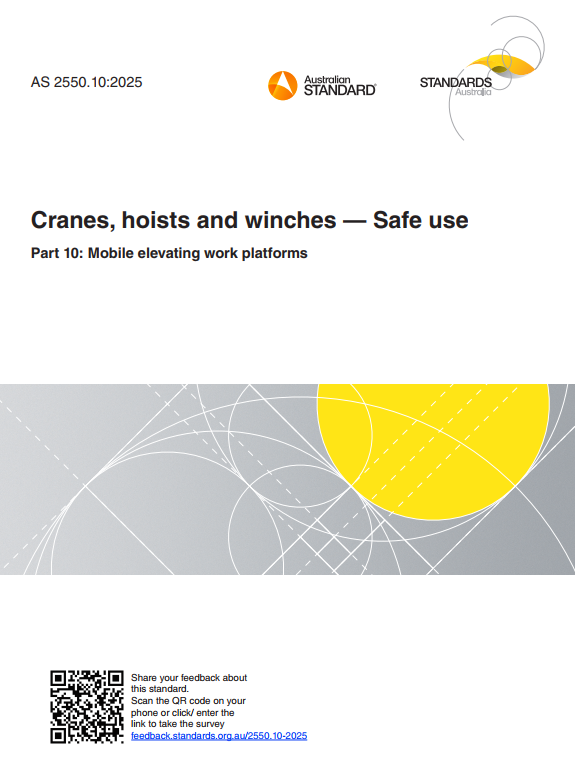ASTM A967/A967M, 2017 Edition – Standard Specification for Chemical Passivation Treatments for Stainless Steel Parts
ASTM A967 specification covers several different types of chemical passivation treatments for stainless steel parts. It includes recommendations and precautions for descaling, cleaning, and passivation of stainless steel parts. It includes several alternative tests, with acceptance criteria, for confirmation of effectiveness of such treatments for stainless steel parts.
Practices for the mechanical and chemical treatments of stainless steel surfaces are discussed more thoroughly in Practice ASTM A380/A380M.
Several alternative chemical treatments are defined for passivation of stainless steel parts. Appendix X1 and Appendix X2 give some nonmandatory information and provides some general guidelines regarding the selection of passivation treatments appropriate to particular grades of stainless steel. This specification makes no recommendations regarding the suitability of any grade, treatment, or acceptance criteria for any particular application or class of applications.
The tests in this specification are intended to confirm the effectiveness of passivation, particularly with regard to the removal of free iron and other exogenous matter. These tests include the following practices:
Practice A—Water Immersion Test,
Practice B—High Humidity Test,
Practice C—Salt Spray Test,
Practice D—Copper Sulfate Test,
Practice E—Potassium Ferricyanide-Nitric Acid Test, and
Practice F—Damp Cloth Test, and
Practice G—Boiling Water Immersion Test.
NOTE 1—Free iron denotes iron present on the surface of the parts, including but not limited to iron contamination, iron-tool marks, residualiron salts from pickling solutions, iron dust, atmospheric exposure, iron deposits in welds, embedded iron, and iron oxide.
The values stated in either SI units or inch-pound units are to be regarded separately as standard. The values stated in each system may not be exact equivalents; therefore, each system shall be used independently of the other. Combining values from the two systems may result in non-conformance with the standard.
This standard does not purport to address all of the safety concerns, if any, associated with its use. It is the responsibility of the user of this standard to establish appropriate safety and health practices and determine the applicability of regulatory limitations prior to use.
This international standard was developed in accordance with internationally recognized principles on standardization established in the Decision on Principles for the Development of International Standards, Guides and Recommendations issued by the World Trade Organization Technical Barriers to Trade (TBT) Committee.
General Product Information:
| Revision | 2017 Edition |
| Document Type | |
| Document Language | English |
| Pages | 9 |
| Publisher | ASTM International (ASTM) |
| Status | Current |

